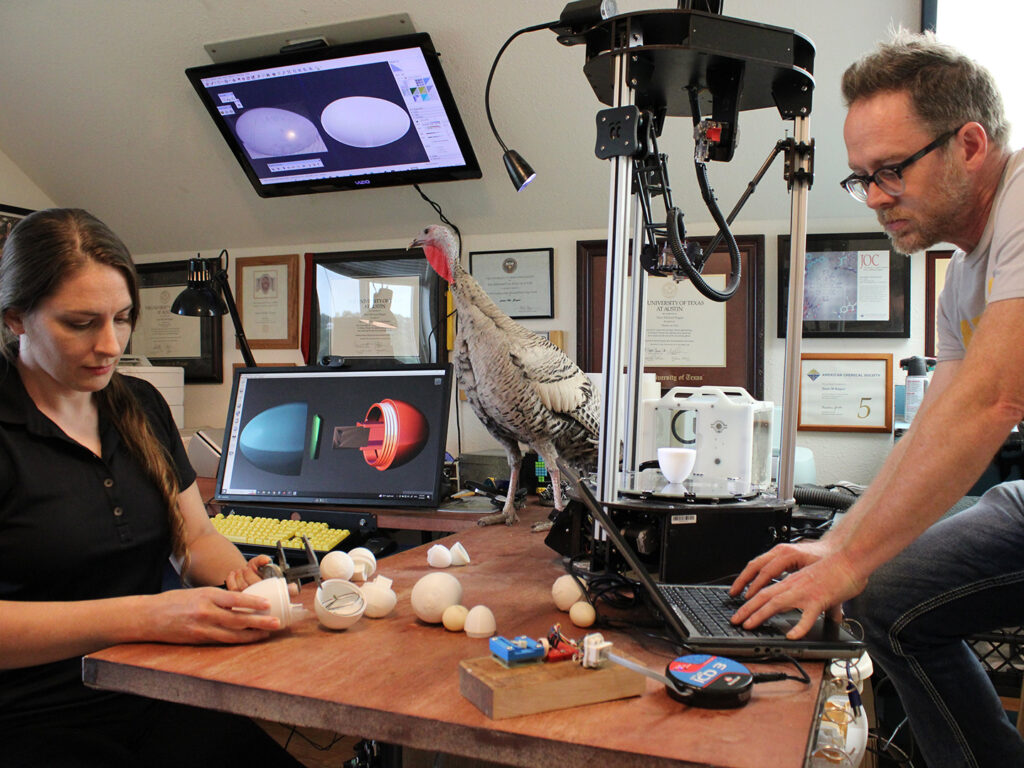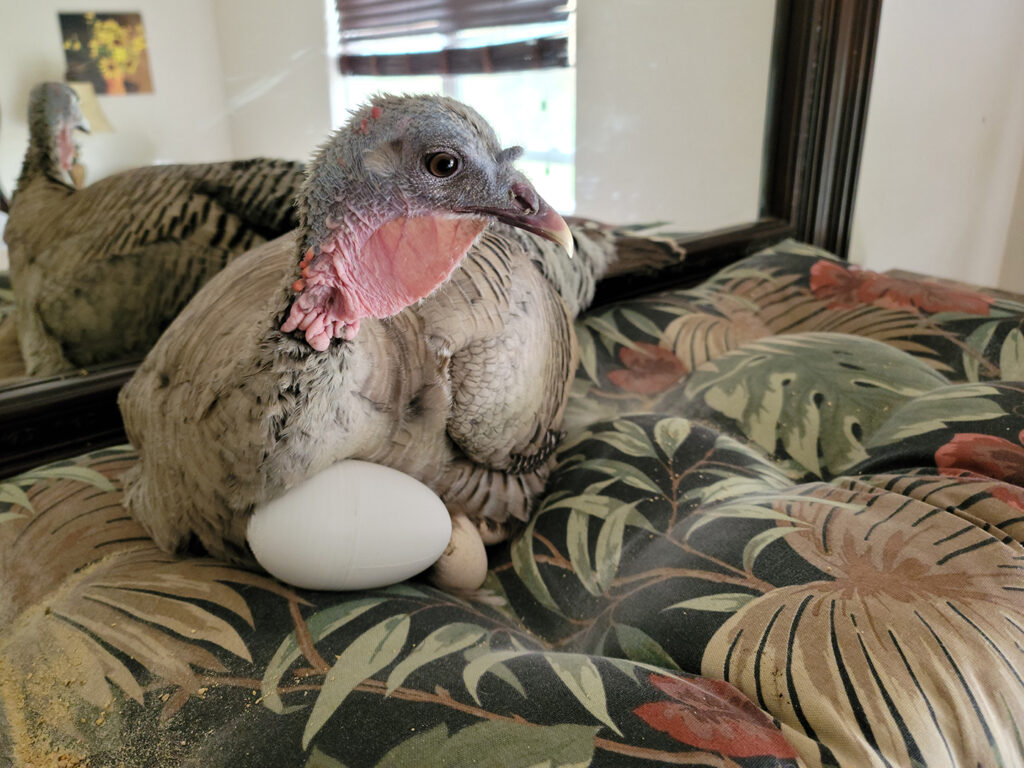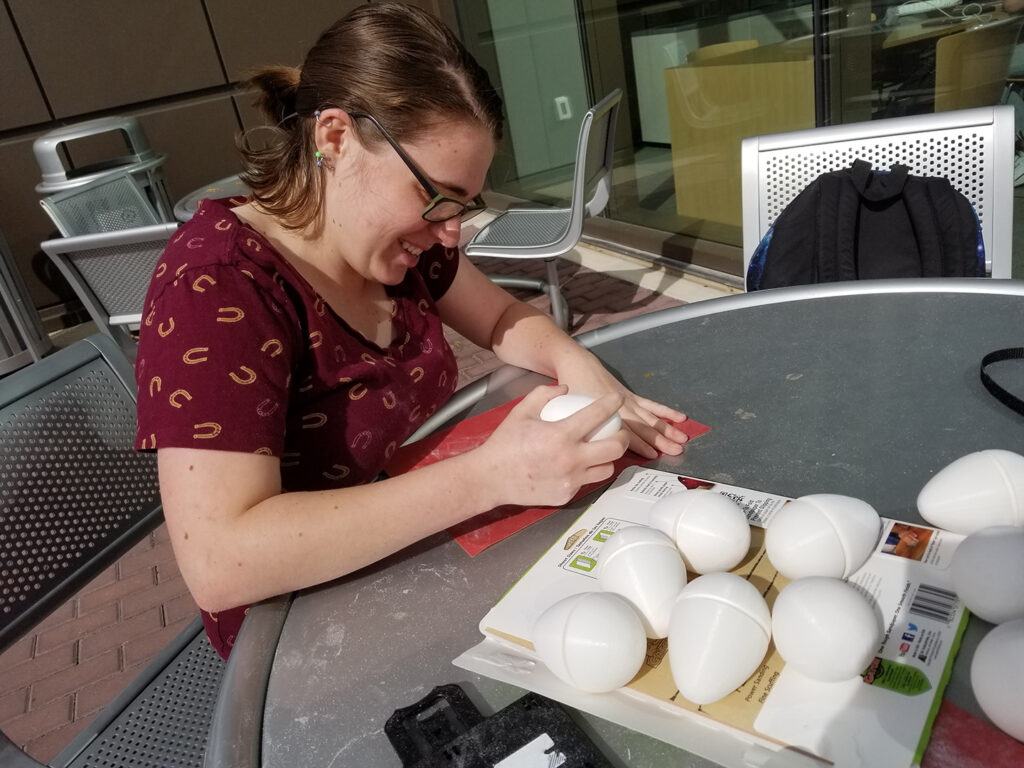Texas A&M Researcher Hatches New Technology To Save Endangered Birds
Story by Courtney Price, VMBS Communications
The so-called “smart eggs,” designed to look like bird eggs, carry sensors that capture information necessary for artificial incubation.

A researcher from the Texas A&M School of Veterinary Medicine & Biomedical Sciences (VMBS) is creating unique data collection devices to promote reproduction in endangered bird populations.
The devices, designed to look like bird eggs, carry sensors that capture information necessary for artificial incubation. The information is an important part of restoring declining bird populations, according to Dr. Constance Woodman, the program manager for the USDA Conservation Innovation Grants program at Texas A&M University and faculty member in the VMBS’ Department of Veterinary Pathobiology.
In order to increase the number of eggs in a population, conservationists often remove eggs from nests and place them in artificial incubators, which keep the eggs at an optimal temperature range and in the correct humidity for the eggs to hatch successfully.
Removing the eggs serves several purposes — it keeps them safe from accidental damage and it encourages hens (female birds) to lay additional eggs.
Once the chicks hatch, they are returned to their parents.
However, for artificial incubation to be successful, conservationists must mimic the incubation environments found in nature, including temperature, sound, and egg rotation patterns. To make things even more difficult, no two bird species create the same incubation environment.
Woodman is working to make artificial incubation more successful by designing fake bird eggs that log data to help conservationists replicate natural incubation. Depending on what kind of information she needs for each species, she can put sensors to measure light, sound, and temperature inside the egg loggers. They can even record how a mother bird turns the eggs on a three-dimensional axis.
The egg loggers are highly sophisticated research tools designed using technology developed by Dr. Scott Shaffer, a professor at San Jose State University. Other members of the team include inventor and author Sean Ragan and Dr. Donald J. Brightsmith, co-director of The Macaw Society and associate professor at VMBS.
Each batch of egg loggers is made with an individual bird species in mind – meaning the team must redesign the loggers for each species to prevent rejection by the hens.

“The mother bird will reject an egg based on color, weight, surface texture, or if she can feel any cracks or dents in it,” Woodman said. “We don’t want the mother bird to reject the egg because, if she does, we’ve lost the nesting season. So, the artificial eggs should be adequate to convince the mother bird to sit on it.”
The nesting season includes the period when birds mate, build nests, and raise chicks. Every species has a different nesting season, but it typically only happens once a year. Because of this, losing a nesting season can be devastating for conservation efforts, especially when a population has very low numbers.
“When you get down to a very small population of animals, you might have one shot to get data and apply it or you lose the species,” Woodman said.
That’s because when an animal population gets too low, there isn’t enough genetic diversity to create healthy offspring.
Besides collecting information that could save endangered species, the most important aspect of the egg logger design is creating something that won’t harm birds. Thanks to a study she conducted that was funded by the Animal Welfare Institute, Woodman uses only non-toxic materials in the egg loggers, including dyes used to color children’s clothing.
“I was able to run a number of chemical tests on different types of 3D printing processes to make sure it was non-toxic and safe for the animals,” Woodman said. “That was a very big relief for me.”
According to the International Union for Conservation of Nature’s (IUCN) Red List of Threatened Species, 13% of the world’s bird species are threatened with extinction, including more than 400 species in the endangered category and another 200 marked as critically endangered.
Declining bird populations are part of a larger global problem with declining animal species variety. Many species struggle to survive now that human activities are altering the planet’s climate and reducing the size of natural habitats. Without healthy ecosystems that include a wide range of plants and animals, the planet can’t sustain conditions for human existence.
“Our team gets a lot of requests from people all over the world who are trying to save animals,” Woodman said. “In the face of extreme weather and greatly increased rates of population decline and extinction, there’s a lot of need for data right now.”

One request that Woodman and her colleagues received was from the Oregon Zoo. Kelli Walker, the senior condor keeper at the zoo, enlisted Woodman’s team to help collect data on California Condors in the zoo’s breeding program.
Besides condors, the team has used egg loggers to help parrots, gulls, arctic ducks, macaws, old world vultures, and many other species. By using intensive hands-on management techniques like artificial incubation, conservationists can counter some of the effects of changing global weather patterns and habitat loss.
Even so, this kind of work isn’t easy.
While there’s talk of other strategies for helping endangered bird populations increase their numbers, there just isn’t enough funding to make every project happen.
“There’s some promise with cellular cloning,” Woodman said, “but the cost of producing an animal from a tissue culture versus an egg will always favor natural reproduction.”
For now, Woodman’s egg loggers are one of the most versatile and cost-effective ways of addressing bird population decline.
Woodman has seen a few other organizations try to build their own egg loggers, but none of them are quite ready for use in conservation, especially if they only record one kind of data, like temperature.
Every detail matters for hatching healthy chicks.
“You have to have the data,” Woodman explained. “Otherwise, you’re just guessing.”
###
For more information about the Texas A&M School of Veterinary Medicine & Biomedical Sciences, please visit our website at vetmed.tamu.edu or join us on Facebook, Instagram, and Twitter.
Contact Information: Jennifer Gauntt, Director of VMBS Communications, Texas A&M School of Veterinary Medicine & Biomedical Sciences, jgauntt@cvm.tamu.edu, 979-862-4216


